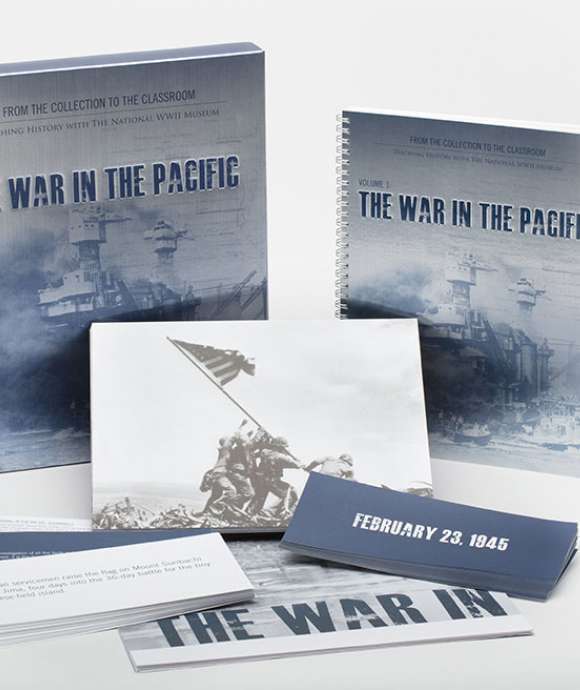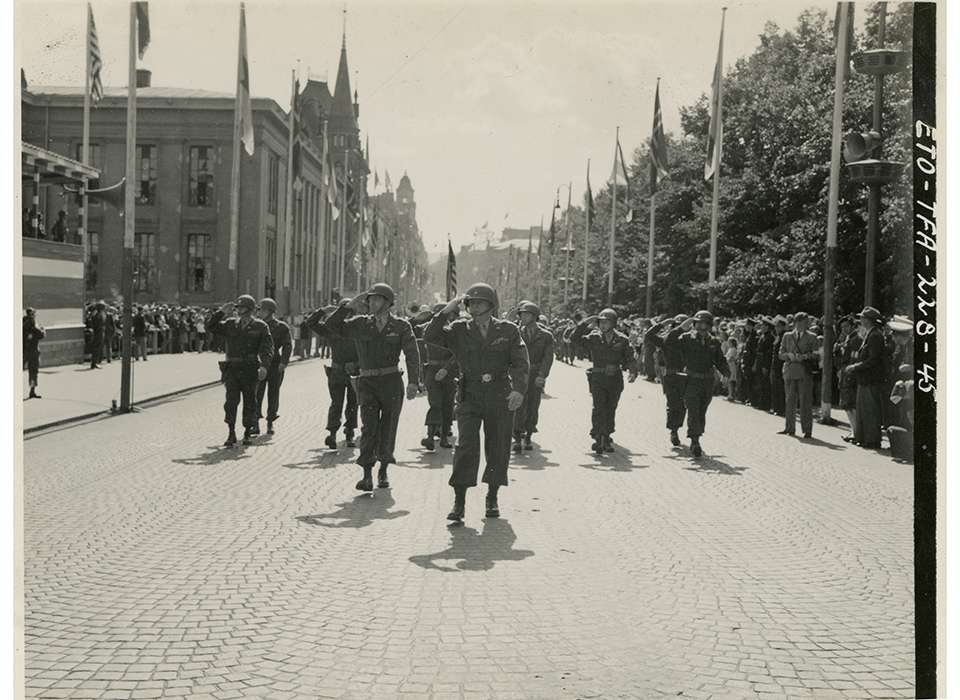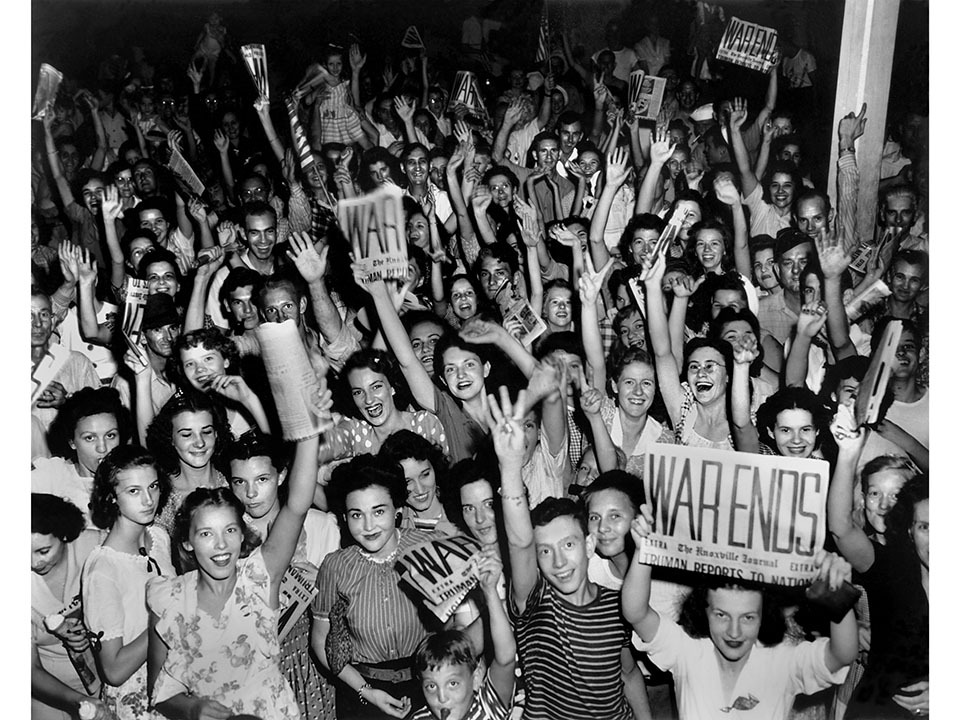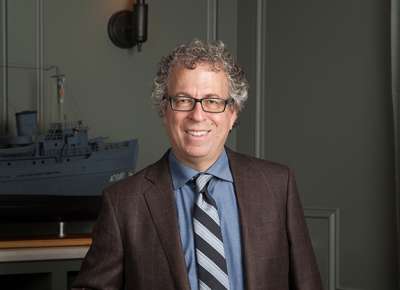In August 1945 the guns of World War II finally fell silent. In all the victorious countries, the end of the war was a time for joy and celebration. People poured into the streets, shouting, singing, and even—in one memorable photograph taken in Times Square, New York—kissing total strangers.
Residents of Oak Ridge, TN, fill Jackson Square to celebrate the surrender of Japan, August 14, 1945. Image by Ed Westcott, American Museum of Science and Energy.
While the world cheered the arrival of peace, however, real challenges lay ahead. Industrial age warfare had left scars on the planet that would take years to heal. Some 65 million people were dead, and the trail of destruction stretched from the Arctic Circle to Australia. Even the survivors bore scars: broken bodies, broken spirits, and what we would today call “post-traumatic stress disorder” (PTSD). On all fronts, new challenges beckoned.
Take the field of international politics, for example. The course of the war had created two new “superpowers,” the United States and the Soviet Union, whose military forces dwarfed the rest of the world. The two powers jostled for supremacy all over the globe, and the rivalry grew in intensity until it became known as a “Cold War.” Only the existence of atomic weapons prevented the Cold War from going hot in the postwar decades, as neither side was willing to trigger a nuclear war. A “balance of terror” kept the peace between the two giants.
The international situation was even more unstable due to the sudden collapse of the European empires after 1945. Dozens of new nations came into existence in Asia and Africa: Ghana, Kenya, Indonesia, Vietnam, and many more. All were formerly oppressed colonial territories that were now seeking their place at the table of global politics and influence, and both the United States and the Soviet Union would court them and try to win them over to the rival camps of the Cold War.
Problems also confronted the United States on the domestic scene. Previously marginalized groups—African Americans, Latinos, women—had served the country loyally, even heroically, during wartime, and were unwilling to go back to the status of second-class citizens. The post-1945 years would see “liberation” movements in US society, especially the civil rights struggle and feminism, that would transform American society dramatically.
While all these political issues were difficult to navigate, the problem of the post-1945 world ran deeper. The world soon learned that this war had not been like previous ones, fought by countries seeking political or strategic advantage. Nazi Germany’s attempt to exterminate the Jewish people, usually called the “Holocaust,” shocked the conscience of the globe. Nazi “death camps” like Auschwitz, Treblinka, and others employed modern technology to kill victims en masse, calling into question the very notion of human progress. Of all the horrors of World War II, the Holocaust continues to cast the longest shadow over our world.
Certainly, the postwar world has seen impressive achievements: New technologies have ended famine in much of the world; medical breakthroughs allow us to live longer and better than ever before; and revolutionary advances in global communications like cellular technology and the Internet allow humankind a sense of community and interconnectedness that previous generations could not have imagined. United Nations peacekeepers are in action all over the world, helping to prevent conflict. International organizations like the World Bank and the International Monetary Fund have allowed the world to avoid a repetition of the collapse of the global economy in the Great Depression of the 1930s that spawned dictators like Adolf Hitler in Germany. There has been no World War III, and in fact, a new global conflict appears increasingly unlikely. These real and impressive accomplishments are vindication for the generation that gave so much to achieve victory from 1941 to 1945.
With that, I invite you to join us for our study of Liberation, the years 1945 and beyond—a story of tragedy and violence, yes, but also a tale of men and women of good will continuing to strive for a better and more peaceful world.

Like this article? Read more in our online classroom.
From the Collection to the Classroom: Teaching History with The National WWII Museum.
Robert Citino, PhD
Robert Citino, PhD, is the former Samuel Zemurray Stone Senior Historian in the Jenny Craig Institute for the Study of War and Democracy.
Cite this article:
MLA Citation:
APA Citation:
Chicago Style Citation:








![Max Fuchs, New York City cantor, sings as Rabbi Sydney [sic] Lefkowitz, Richmond, VA, conducts the first Jewish services from Germany.](/sites/default/files/styles/max_650x650/public/2025-10/image1.jpg)

